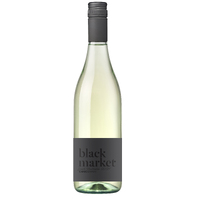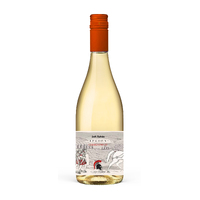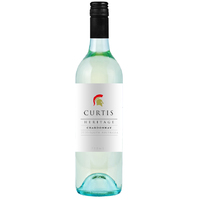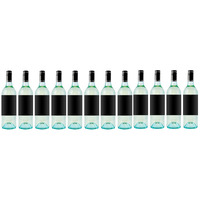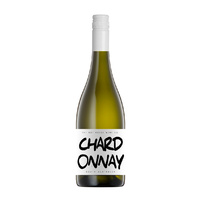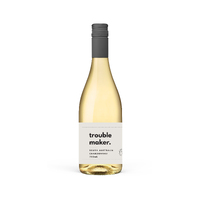McLaren Vale Chardonnay
Chardonnay is a green-skinned grape variety used in the production of white wine. The variety originated in the Burgundy wine region of eastern France but is now grown wherever wine is produced, from England to New Zealand. For new and developing wine regions, growing Chardonnay is seen as a 'rite of passage' and an easy entry into the international wine market.
The Chardonnay grape itself is neutral, with many of the flavors commonly associated with the wine being derived from such influences as terroir and oak. It is vinified in many different styles, from the lean, crisply mineral wines of Chablis, France, to New World wines with oak and tropical fruit flavors. In cool climates (such as Chablis and the Carneros AVA of California), Chardonnay wine tends to be medium to light body with noticeable acidity and flavors of green plum, apple, and pear. In warmer locations (such as the Adelaide Hills and Mornington Peninsula in Australia and Gisborne and Marlborough region of New Zealand), the flavors become more citrus, peach, and melon, while in very warm locations (such as the Central Coast AVA of California), more fig and tropical fruit notes such as banana and mango come out. Wines that have gone through malolactic fermentation tend to have softer acidity and fruit flavors with buttery mouthfeel and hazelnut notes.
Chardonnay is an important component of many sparkling wines around the world, including Champagne and Franciacorta in Italy.
Chardonnay's popularity peaked in the late 1980s, then gave way to a backlash among those wine connoisseurs who saw the grape as a leading negative component of the globalization of wine. Nonetheless, it is one of the most widely planted grape varieties, with 210,000 hectares (520,000 acres) worldwide, second only to Airén among white wine grapes and fifth among all wine grapes.
Like many grape varieties, Chardonnay first came to Australia in the collection of James Busby in 1832, but it only really took off in the 1950s. It is most significant in South Australia, New South Wales — especially the Hunter Region - and Victoria. One of the first commercially successful Chardonnays was produced by Murray Tyrrell in the Hunter Valley in 1971. Tyrell's vineyard was planted with Chardonnay cuttings that he "borrowed" from Penfolds' experimental plantings by hopping over their barb-wire fence one night and pruning their vines. The export driven Australian wine industry was well situated for the Chardonnay boom of the 1980s and 1990s and Australia responded with a unique style of wine that was characterized by big fruit flavors and easy approachability. To compensate for the very warm climate, richness was enhanced by the use of oak chips and acid was added during fermentation. During this period the number of Chardonnay plants increased fivefold and by 1990 it was the most widely planted white wine grape in Australia and third most planted overall behind Shiraz and Cabernet Sauvignon. Early in the 21st century, demand outpaced supply and there was a shortage of Chardonnay grapes which prompted Australian winemakers to introduce new blending partners like Sémillon (known as "SemChard") and Colombard.
Being a rather neutral grape, Australian winemakers first approached Chardonnay in the same manner they were making wine from the similarly neutral Sultana grape. Aromatic yeast were added and maceration was extended to get more flavors from skin contact. While the style of Australian Chardonnay is mostly characterized by the mass-produced products of the hot Riverland region, the cooler climates of the Southern Highlands in New South Wales, Victoria and Tasmania have been creating more crisp, less oaked wines with lime notes. In the Cowra region, Chardonnay's citrus notes are emphasized while Hunter Valley examples have more richness and smoky notes. The Adelaide Hills and Yarra Valley produce a more Burgundian style while Mount Barker in the Great Southern wine region of Western Australia produces Chardonnay that more closely resembles those of Chablis. A rare, isolated clone exists in the Mudgee region that locals believe traces its ancestry back to some of the first vines brought to Australia in the 19th century. While the wine made from this clone is not particularly distinguished, it can still be of very good quality. Overall, there has been a shift in style since the 1980s from deep golden, oily wines with melon and butterscotch flavors to lighter, paler Chardonnays with more structure and notes of white peaches and nectarines. Sparkling wines from Chardonnay are produced in the cool regions of Geelong, Adelaide Hills, Macedon Ranges and Tasmania.
McLaren Vale Chardonnay
The Tale of McLaren Vale Chardonnay
Once upon a time in Australia, three little pigs grew up in a spectacular wine-producing vale. With our parents, we huffed and puffed, pruning vines and squashing grapes. Once legally allowed to savour mischief in a glass, we wanted to share the joy of a McLaren Vale Chardonnay with the rest of the country. Since we couldn’t bring all the people to the South, we built McLaren Vale Cellars in 2010 and sent the South’s best to the people happily ever after.
What Sets South Australian Chardonnay Apart
Excuse us for bragging, but South Australia indeed produces the best wines in the country. Australian Chardonnay might not win all the awards all the time, but we don’t judge the judges. We rest assuredly content because one sip of a South Australian Chardonnay hits our inner golden buzzer every time. Here are a few reasons why:
• Adjectives. The list of words classy connoisseurs use to describe our Chardy is extensive. Fruity, zesty, refreshing, sunny, frivolous, and fun are some of our favourites.
• Atmosphere. Wine from warmer regions such as ours is less acidic and fuller-bodied with higher alcohol content. Gatherings, including our chardonnay, always enjoy the perfect tones that often help you read between the vines.
• All-rounder. Yes, we know the silly vino rules about white wine and pale food, but how boring. A vale chardonnay enjoys the rougher company of steak, ribs, burgers, and sweet tarts too.
Tips Regarding Australian Chardonnay
Our deepest condolences if you are still stuck in a Chardy set or have aspirations to join one. The least we can do is provide some guidance for when in the presence of grandeur:
• Chill. Keep it cool for at least an hour before drinking. This brings out the variety of aromas, flavours, and adjectives (see list above). We suggest chilling at 10 to 12 degrees Celsius. Too low temperatures strip too much of the good stuff.
• Oaky-Dokey. If you prefer oaked chardonnay, say why by using full-bodied, rich, toasty, buttery, vanilla, and sweet bouquet in more than one sentence. If you like it naked or unoaked, let it rip with crisp, bright and light-bodied.
• Fun facts. Your favourite wine gets its name from Chardonnay, a village in France’s Burgundy region. The flavours depend on where the grapes were grown and the winemaker’s style. James Busby was a Scottish genius who, in the 1820s, brought vineyard clippings from Europe, which earned him the title Father of Australian Wines.
Why You Should Buy from McLaren Vale Cellars
We are a family-owned online business offering the best prices for a variety of locally produced wines. Our extensive product list of the vale’s top cellars is updated daily. We deliver countrywide. Although we appreciate a good story, there is nothing piggy about us except our appetite for excellent wine and even better service.
Contact us all year round for more bottled fantasies and surprises, such as our Black Market Mystery Wines.

